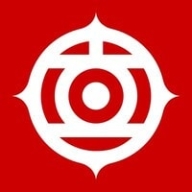

Hitachi Unified Compute Platform HC Series and Red Hat Hyperconverged Infrastructure compete in the hyperconverged infrastructure market. Hitachi is more cost-effective with robust support and simple deployment, while Red Hat offers advanced features and scalability justifying its higher cost for those prioritizing these aspects.
Features: Hitachi stands out with simplified management, integrated data protection, and robust compute resources. Red Hat provides superior flexibility, open-source benefits, and powerful integration capabilities. Differences showcase Hitachi's ease of use focus against Red Hat's comprehensive feature set.
Ease of Deployment and Customer Service: Hitachi is praised for straightforward integration and strong customer support for smoother setup. Red Hat offers excellent documentation and community support but has a complex deployment from its extensive configuration options.
Pricing and ROI: Hitachi offers competitive initial pricing and strong ROI through efficient resource use. Red Hat has a higher upfront cost with long-term value supported by scalability and open-source benefits. Hitachi is more budget-friendly, while Red Hat caters to those valuing extensive features and flexibility justifying the higher expense.
Hitachi Unified Compute Platform (UCP) is the company's product for converged infrastructure (CI), combining resources server, storage, networking, virtualization, and software management.
Red Hat Hyperconverged Infrastructure - based on our leading OpenStack and virtualization platforms - provides co-located, scalable, software-defined compute and storage, driven by Red Hat Ansible Automation on economical, industry-standard hardware.
We monitor all HCI reviews to prevent fraudulent reviews and keep review quality high. We do not post reviews by company employees or direct competitors. We validate each review for authenticity via cross-reference with LinkedIn, and personal follow-up with the reviewer when necessary.